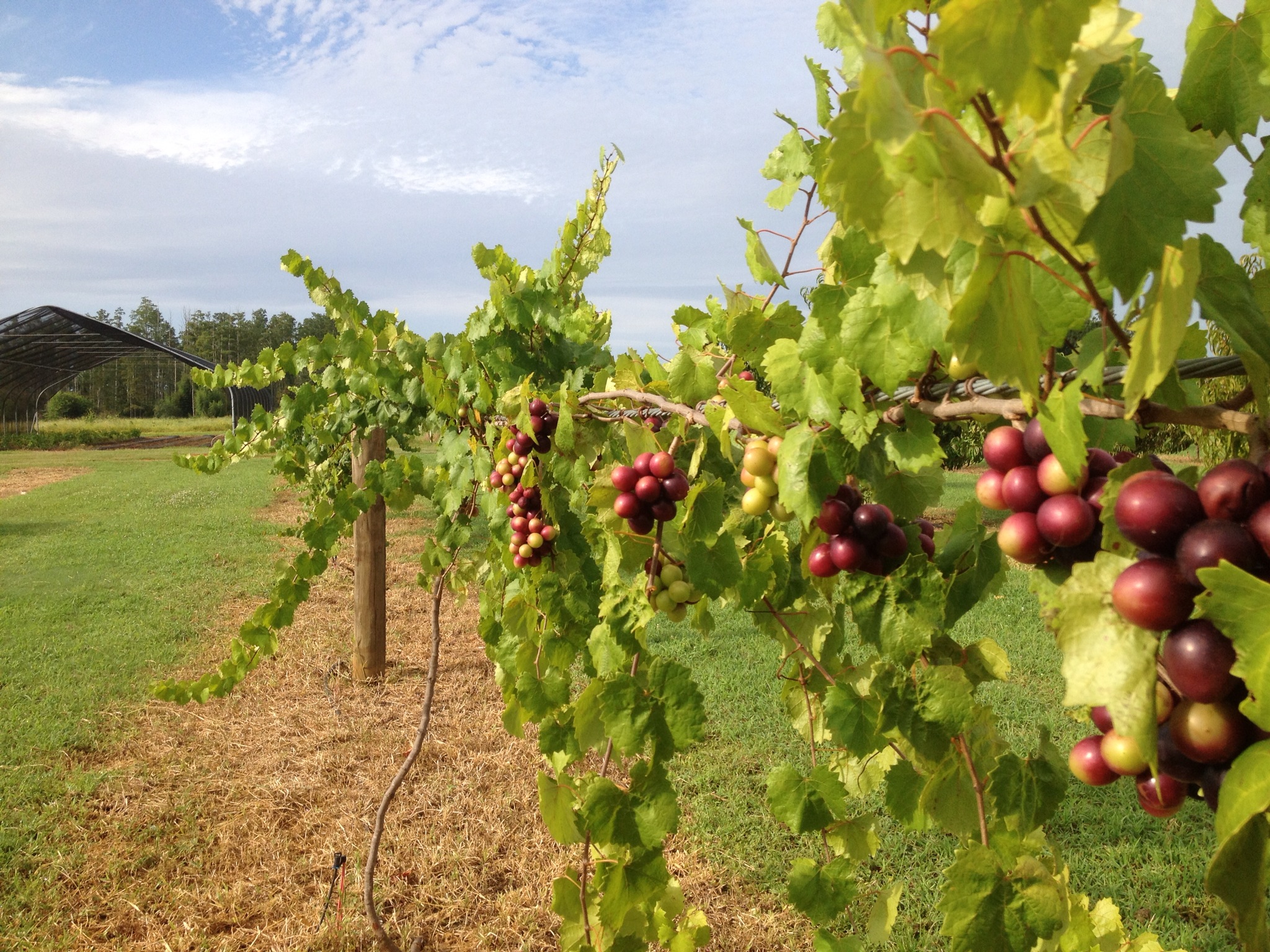
by Blake Thaxton | Jul 22, 2013
Fruit trees are a wonderful addition to the landscape at home or even a great niche for the small farmer.

Most people love the thought of picking fresh fruit off of the tree or vine and knowing exactly where it comes from. There are a lot of considerations that must be taken into account for a homeowner looking to spice up the landscape or the small farmer looking to diversify their operation.
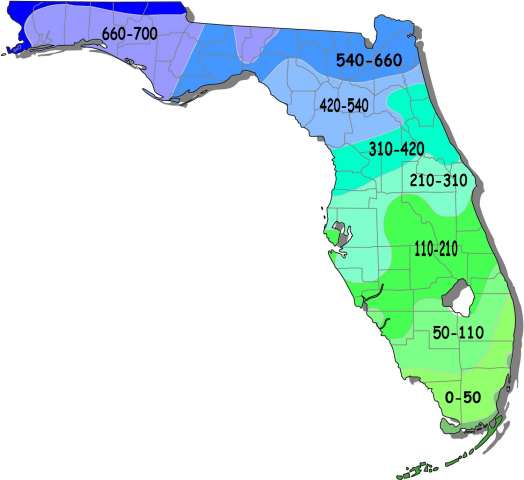 Chill Requirements:
Chill Requirements:
Deciduous trees have a chilling requirement in order to flower and produce fruit. Species and cultivars will have their own number of chill hours that must be met. Chill units are the estimated accumulative number of hours at 45°F or under during the dormant season. The Panhandle of Florida receives the most chill units in the state, therefore allowing more of a selection of fruit trees.
Disease Pressures:
Pecan, Peach/Nectarine, Plum, Bunch Grape, Apple, and Pear all have high disease pressures in the climate of the Florida Panhandle. Peach and Nectarine, for example, have a high number of necessary fungicide sprays required for high quality fruit. Mushroom root rot, peach scab, bacterial leaf spot, and brown rot are a few diseases of Peach and Nectarine. The other fruits mentioned have a similar list of disease problems that demand frequent and timely applications of fungicides.
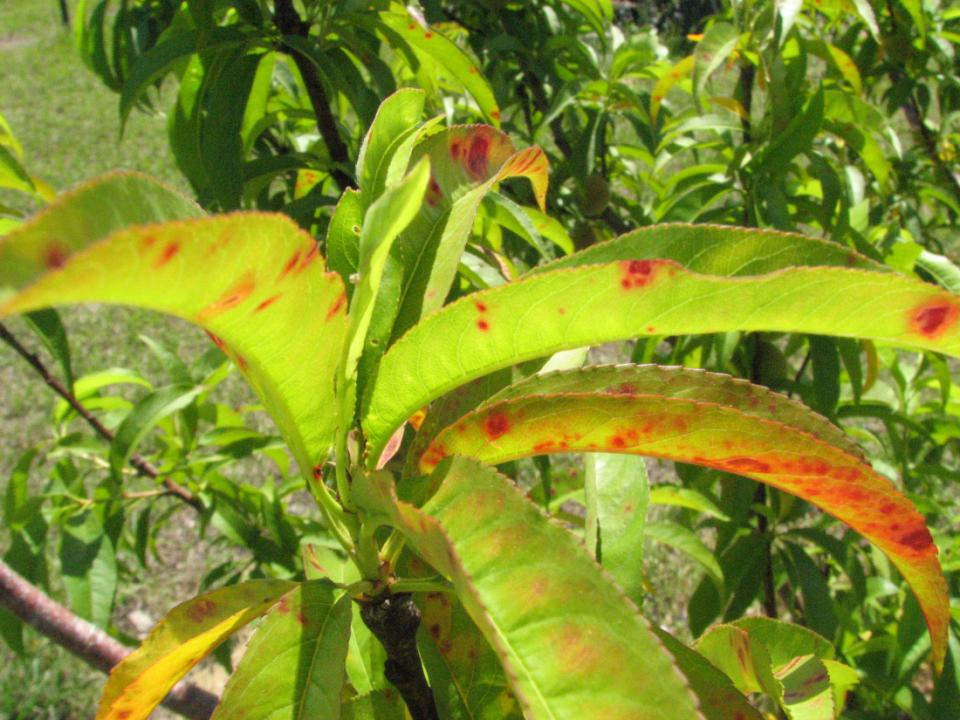
Peach tree affected by Bacterial Leaf Spot symptoms. Photo by G. England.
Along with disease pressures and chilling requirements, there are other factors that have to be taken into account before installing fruit trees in Northwest Florida. The sustainability of fruit trees in North Florida can be read about further in this UF/IFAS publication. In the publication, proper varieties and cultivars are listed for the fruit crops discussed. To learn more about fruit culture in Florida, please take a look at the following linked publications.
If questions arise about whether a certain fruit crop can be grown in the Florida Panhandle, contact your local extension agent.
by Julie McConnell | Jul 1, 2013
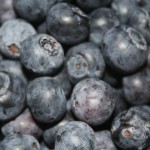
Blueberries
Have you tasted the great local blueberries available this season? Want to start your own Blueberry garden? Now that Blueberry harvest is in full swing in the Florida Panhandle, it is a good time to discuss blueberry culture.
Blueberry plants in garden centers lure us in with bell shaped flowers or especially if already setting fruit. Before you take one home, make sure your site is suitable. Doing your homework before you plant is important, but especially so when you want to grow a plant with specific cultural requirements such as blueberries. Blueberries require well-drained acidic soil that contains organic matter, a minimum of 4-5 hours of sunlight daily, and space away from competing roots. Chill hour requirements and bloom time vary by blueberry types.
Soil in the Florida Panhandle has a wide pH range (measure of acidity) and can vary greatly even within a half-acre site. Having your soil tested prior to planting is critical to growing blueberries successfully because it is very difficult to lower pH if your soil is higher than the target range. Blueberries need acidic soil (pH 4.2-5.5) to be able to use micro-elements in the soil such as iron and zinc. As the pH increases, these nutrients become less available to the plant even if they are present in the soil in adequate quantities. Nutrient deficiency leads to weak plants and loss of vigor. Plan to test your soil before you purchase plants to ensure your site has the ideal pH range, visit your local UF/IFAS County Extension Office to obtain a soil test kit. For more details about how soil pH affects your landscape, please see EDIS SL256: Soil pH and the Home Landscape or Garden.
Sandy soils commonly found in North Florida tend to be low in organic matter. Incorporating soil amendments directly into planting beds or using mulches that decompose (such as pinestraw or wood mulch) will help increase organic matter in your landscape. Peat moss or pine bark can be incorporated into beds planned for blueberries or pine bark can be used as mulch. Adding organic matter will help retain soil moisture, which is beneficial to blueberries that have shallow root systems.
Retaining soil moisture is valuable to blueberries, however, the site does need to drain well to a minimum depth of 18 inches. Areas that remain wet for long periods of time increase the risk of Phytophthora root rot damage. If an otherwise ideal site does not drain well, consider building a raised bed or changing the location.
Four to five hours a day is the minimum sunlight needed for good blueberry production. Make sure your sunny site is at least 20 feet from building foundations and competing tree roots. Blueberry plants can get large, over ten feet in height and width! Plan to give them room to grow; with pruning they can be maintained around 7’x7’.
There are two main types of blueberries that grow well in Florida: the southern highbush and rabbiteye. Among those types, there are specific cultivars with low chill requirements that perform better in Florida than in other southern states. Rabbiteye blueberries are recommended for areas north of Ocala, southern highbush for central and south Florida. When choosing cultivars, you need to plant at least two different cultivars within the same type (rabbiteye with rabbiteye) and make sure that bloom time overlaps so that cross pollination can take place.
Rabbiteye cultivars recommended for the Panhandle are:
Early season
• ‘Beckyblue’
• ‘Bonita’
• ‘Climax’
Mid- to late-season
• ‘Brightwell’
• ‘Powderblue’
• ‘Tifblue’
• ‘Woodard’
• ‘Chaucer’
• ‘Bluegem’
For more information about blueberry site preparation, selection, pest management, and care please see EDIS CIR1192 Blueberry Gardener’s Guide.
by Matthew Orwat | May 9, 2013
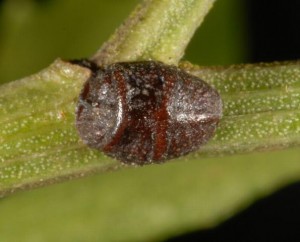
Adult Scale – Image Courtesy Lyle Buss
Many different species of scale insect infect citrus in North Florida, and mid spring is usually when gardeners notice them on their fruit trees and ornamental shrubs. Many different species of scale affect Florida homeowners and cause a host of problems in the garden and landscape. Citrus is particularly prone to scale infestations in North Florida.
The Satsuma Tangerine, Citrus unshiu, is currently a fruit that is highly prized by home gardeners in North Florida. Now is the time to act to prevent heavy scale infestations since weather is warming and control methods cannot be used when daytime temperatures are very hot. This pest has already been observed at multiple locations throughout the Florida Panhandle in both home gardens and commercial production areas.
Scale often reduces tree vitality by ingesting sap that would otherwise be used by the tree for growth and fruit production. They may also cause premature fruit drop and defoliation. A secondary pest that may occur as result of Scale is Sooty Mold. Sooty Mold lives off of the surgery secretions of the scale and can cause citrus leaves to look black and eventually drop.
The good news is that Scale is relatively easy to control when managed in winter or early in the spring growing season. From October through mid-May growers should use Horticultural Oil to control scale, particularly horticultural oil containing petroleum products. These products deprive scale insects of oxygen. This will smother them, but dead insects will need to be washed off if complete removal is desired.
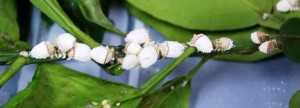
Cottony Cushion Scale – Image Courtesy Matthew Orwat
Applications should be timed correctly since horticultural oil applications can burn plants once the outdoor temperature reaches 94 ® F. A good rule of thumb is to apply horticultural oil on cool and cloudy days to minimize leaf damage. Always consult the label of each individual product before application and never apply more than the recommended amount. This last statement is especially crucial for horticultural oil applications, since increased rates are highly likely to damage plants. For more information, please consult this UF / IFAS publication on Citrus Scale and the Citrus Pest Management Guide.
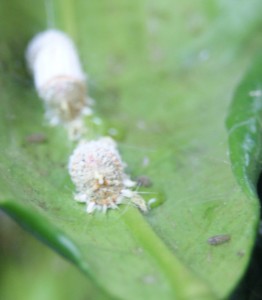
Cottony Cushion Scale – Image Courtesy Matthew Orwat
by Blake Thaxton | Apr 12, 2013
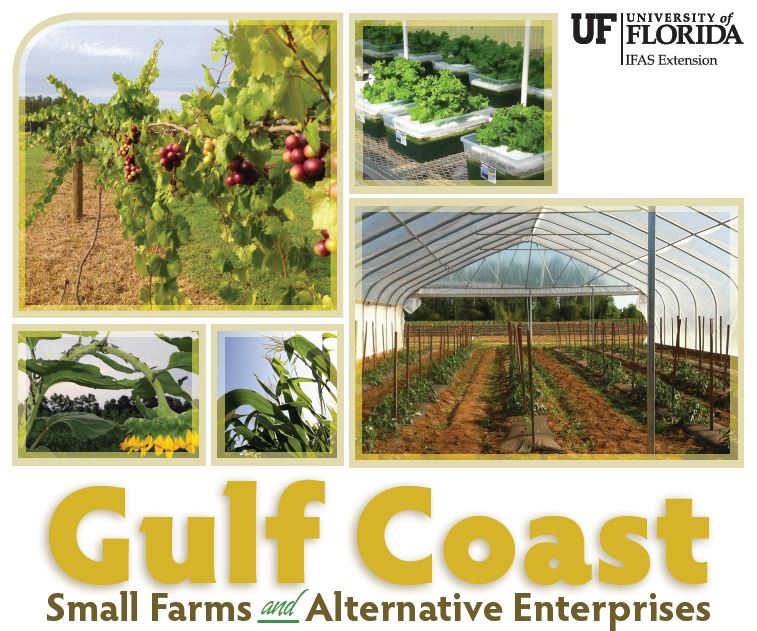
UF/IFAS NW District Extension agents and the UF/IFAS West Florida Research and Education Center have joined forces to provide relevant hands on training for the Small Farmers of northwest Florida and surrounding areas by developing the Gulf Coast Small Farms and Alternative Enterprises program. This Spring Field Day will be a sneak peek at what the program will offer in the coming months and years.
Join us to discover new production practices and opportunities for your small farm or fruit and vegetable gardens!
Topics and Demonstrations:
- Irrigation Practices
- Small Farm Integrated Pest Management
- Hydroponic Float Bed Lettuce
- Protected Agriculture
- Food Safety Issues for the Small Farm

Register here: Gulf Coast Small Farms & Alternative Enterprises
For more information please contact:
Robin Vickers at 850-393-7334 or rvickers@ufl.edu
Blake Thaxton at 850-623-3868 or bthaxton@ufl.edu

 Chill Requirements:
Chill Requirements:






